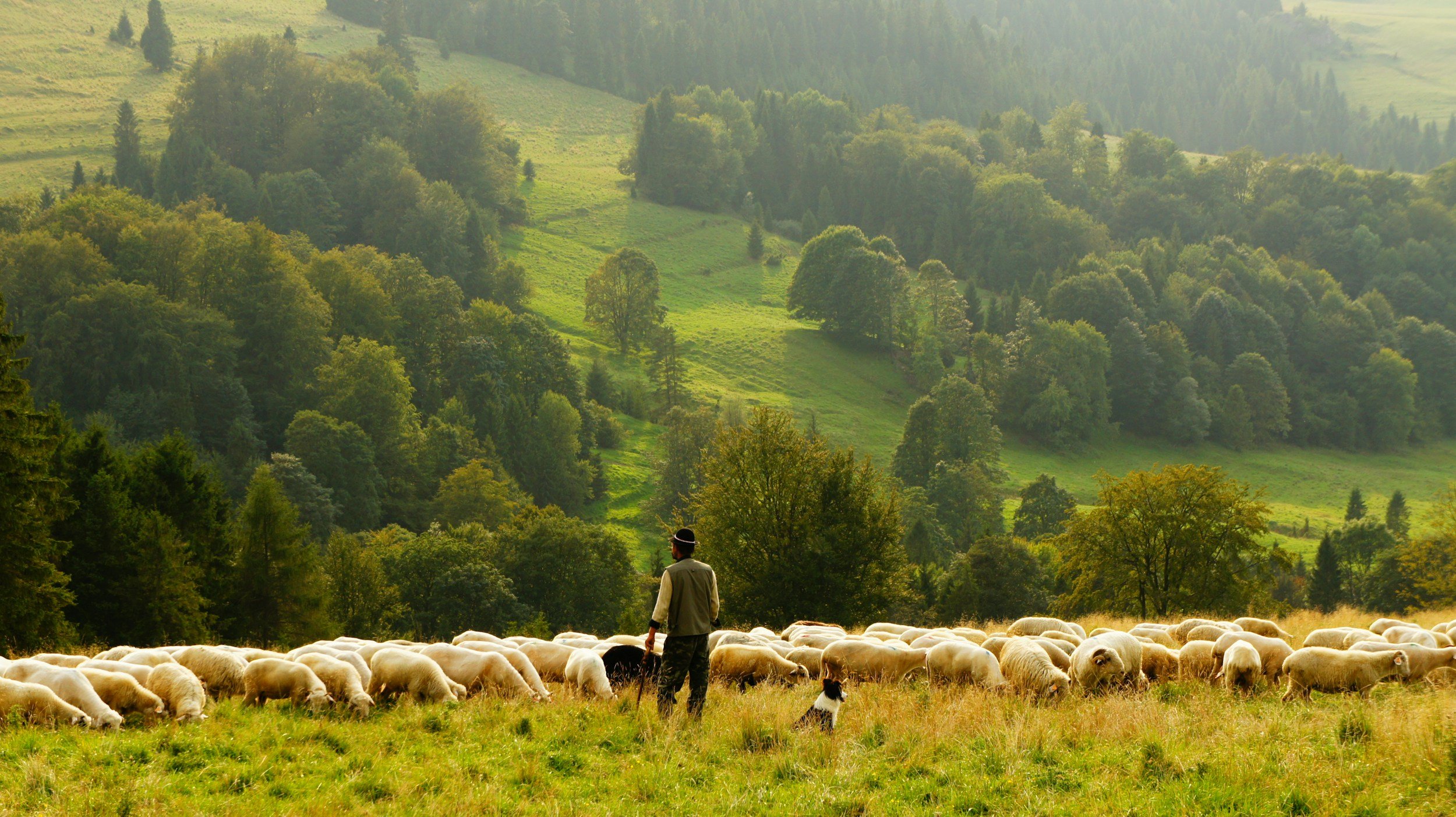
"Always remember: If you're alone in the kitchen and you drop the lamb, you can always just pick it up. Who's going to know?” - Julia Child
🌿 Ridgemeade Pasture Species
Last Updated October 2025
Our pastures host more than 70 species of grasses, legumes, and native forbs — a living community shaped by Lake Erie’s microclimate. We welcome the so-called weeds that feed our soil, pollinators, and sheep alike: chicory, clover, yarrow, plantain, wild carrot, and wild bergamot thrive here alongside orchardgrass, timothy, switchgrass, and bluegrass. This botanical diversity is the foundation of our terroir — flavor born of life in balance.
Perennial Grasses
Orchardgrass (Dactylis glomerata)
Timothy (Phleum pratense)
Meadow Brome (Bromus biebersteinii)
Smooth Brome (Bromus inermis)
Bluegrass (Annual & Perennial)
Tall Fescue (endophyte-free)
Switchgrass (Panicum virgatum)
Big Bluestem (Andropogon gerardii)
Indian Grass (Sorghastrum nutans)
Eastern Gamagrass (Tripsacum dactyloides)
Virginia Wild Rye (Elymus virginicus)
Sweet Vernal Grass
Canary Grass (Reed Canary, select low-alkaloid strain)
Catttails
Legumes
White Clover (Trifolium repens)
Red Clover (Trifolium pratense)
Alsike Clover (Trifolium hybridum)
Birdsfoot Trefoil (Lotus corniculatus)
Alfalfa (Medicago sativa)
Crown Vetch (Coronilla varia)
Hairy Vetch (Vicia villosa)
Partridge Pea (Chamaecrista fasciculata)
Showy Tick Trefoil (Desmodium canadense)
Forbs / Broadleaf Herbs
Chicory (Cichorium intybus)
Plantain (Narrowleaf & Broadleaf)
Yarrow (Achillea millefolium)
Dandelion (Taraxacum officinale)
Oxeye Daisy (Leucanthemum vulgare)
Small Burnet (Sanguisorba minor)
Selfheal / Heal-All (Prunella vulgaris)
Goldenrod (Solidego, various native species)
Asters (New England, Smooth Blue, Calico)
Milkweed (Common & Swamp)
Wild Bergamot / Bee Balm (Monarda fistulosa)
St. John’s Wort (Hypericum perforatum)
Sulphur Cinquefoil
Bedstraw (Galium mollugo)
Buttercup (native)
Wild Strawberry
Purslane (Portulaca oleracea)
Lamb’s Quarters (Chenopodium album)
Ironweed (Vernonia noveboracensis)
Joe Pye Weed (Eutrochium purpureum)
Smartweed (Polygonum pensylvanicum)
Cup Plant (Silphium perfoliatum)
Ragweed
Jewlweed
Mullein
Woody Browse / Shrubs
Red Osier Dogwood (Cornus sericea)
Alternate-Leaved Dogwood (Cornus alternifolia)
Willow species (Streamco, Pussy, Sandbar)
Elderberry (Sambucus canadensis)
Sumac (Staghorn, Smooth)
Spicebush (Lindera benzoin)
Wild Plum (Prunus americana)
Black Cherry (Prunus serotina)
Crabapple / Wild Apple (Malus spp.)
Hickory (Shagbark)
Oak (White, Red)
Black Walnut
Butternut (Juglans cinerea)
Serviceberry (Amelanchier arborea)
Persimmon (Diospyros virginiana) – marginal in your zone but worth trial
Pawpaw (Asimina triloba) – thriving in Erie’s river bottoms
Sumac
Sassafras
Multiflora Rose
Knot weed
Bedstraw
Functional Wild Allies
These aren’t forage plants per se, but play key ecological roles:
Common Fleabane (Erigeron philadelphicus)
Jewelweed (Impatiens capensis)
Black-eyed Susan (Rudbeckia hirta)
Sweet William (Dianthus barbatus)
Oxeye Sunflower (Heliopsis helianthoides)
Queen Anne’s Lace (Daucus carota) (Wild Carrot)
Wild Basil (Clinopodium vulgare)
Wild Mint (various species)
Tea Berry (Gaultheria procumbens, also called Eastern Wintergreen)
Indicator Species
A few species that tell us about soil conditions:
Curly Dock (Rumex crispus) → compaction or low Ca:Mg ratio in limited areas; deep taproot aerates subsoil and mines minerals
Broadleaf Dock (Rumex obtusifolius) → high nitrogen accumulation; balances nutrient excess through deep nutrient cycling
Dogbane (Apocynum cannabinum) → prefers mineral-balanced, biologically active soils; indicator of mid-succession stability and good drainage
Milkweed (Common & Swamp – Asclepias syriaca, A. incarnata) → indicator of restored native balance and pollinator abundance; thrives in mineral-rich, undisturbed soils; host plant for monarchs and symbol of mature ecological succession
Burdock (Arctium minus / A. lappa) → past compaction or nitrogen excess; taproot breaks hardpan and stores minerals
Thistle (Bull or Pasture) → localized compaction or low calcium; loosens tight clay and supports early pollinators
Horsenettle (Solanum carolinense) → signals overgrazed patches and localized stress zones
Plantain & Dandelion → high calcium and balanced microbiome; natural de-compactors and nutrient accumulators
Chickweed → cool, fertile microclimate; indicates moisture retention and good humus content
Yarrow (Achillea millefolium) → strong mycorrhizal activity and balanced pH; dynamic accumulator and pollinator attractor
Chicory (Cichorium intybus) → deep rooting and robust mineral cycling; improves soil structure and forage quality

